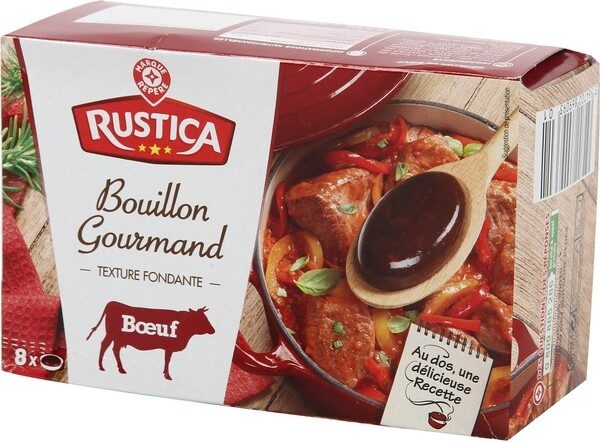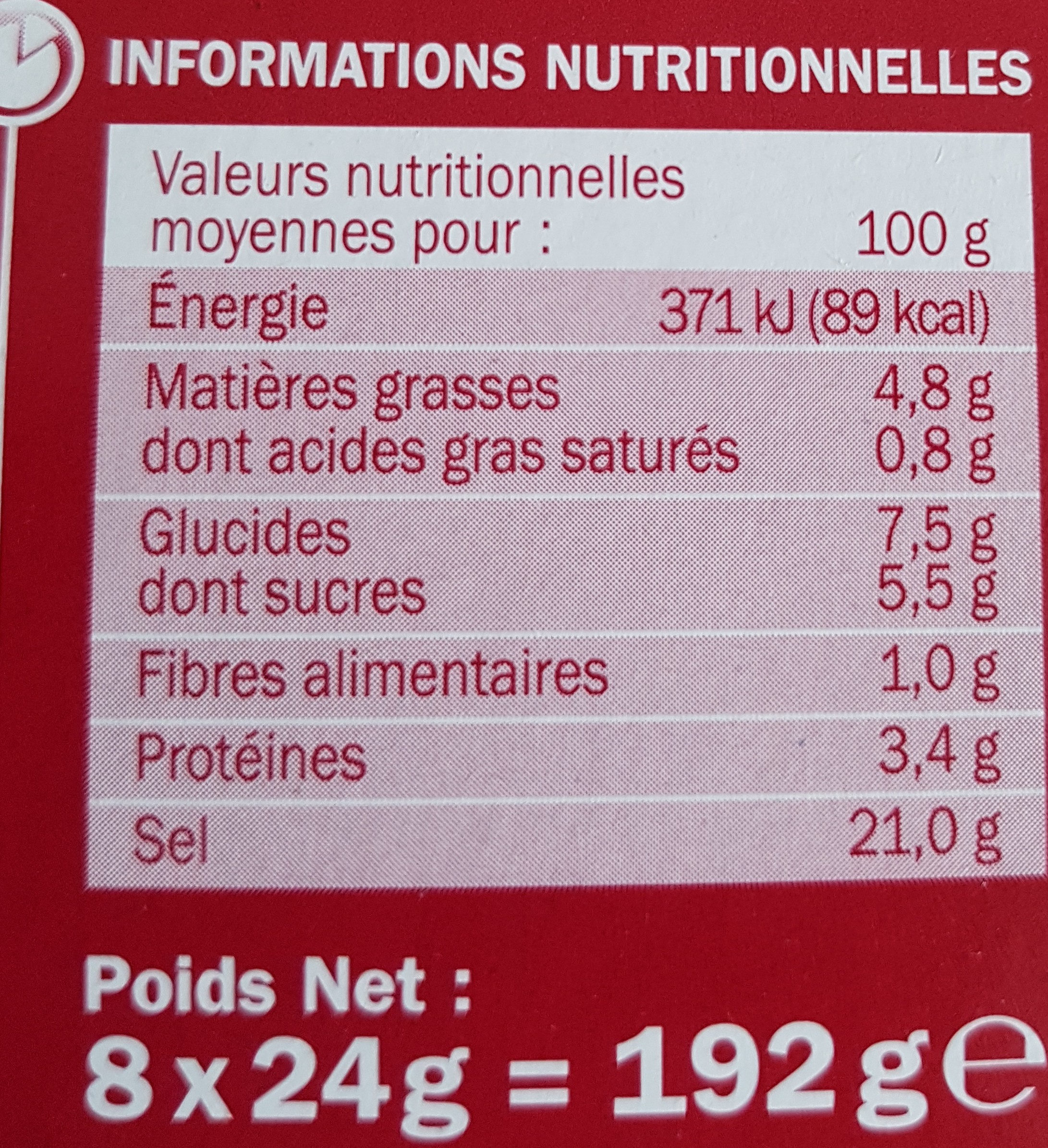Bouillon gelee boeuf - Marque Repère - 8 x 24 g
This product page is not complete. You can help to complete it by editing it and adding more data from the photos we have, or by taking more photos using the app for Android or iPhone/iPad. Thank you!
×
Some of the data for this product has been provided directly by the manufacturer Scamark.
Barcode: 3564700869093 (EAN / EAN-13)
Quantity: 8 x 24 g
Brands: Marque Repère, Rustica
Categories: Broths, Beef broth
Stores: Leclerc
Countries where sold: France
Matching with your preferences
Environment
Packaging
Transportation
Other information
Preparation: En cocotte ou à la poêle : Pour relever délicatement les saveurs de vos pats, ajoutez avant la fin de la cuisson un bouillon gourmand à votre recette (1 bouillon pour 1 plat pour 4 personnes). Inutile de saler. En cuisson à l'eau : Pour relever délicatement le goût de vos pâtes ou votre riz, laissez fondre 1 bouillon gourmand dans l'eau de bouillante avant la cuisson (1 bouillon pour 500ml d'eau). Inutile de saler.
Report a problem
Data sources
Product added on by kiliweb
Last edit of product page on by roboto-app.
Product page also edited by openfoodfacts-contributors, org-scamark, scamark, yuka.WXAxUlNwOEIvUFlUdnNCditpdlpxODFPN2NlNGJXUHVKY2MvSVE9PQ.











